5 Best Cable Machine Bicep Exercises (with Pictures!)
While movements like the basic cable curl or rope hammer curl may come to mind when you think of cable machine related bicep-exercises, there are actually quite a few cable exercises that can be used to pack on biceps mass.
When speaking of cable machine biceps exercises, exercises like the cable bicep curl are just the start. Depending on your needs, wide-reaching compound movements like the underhand cable row, or technical and highly specific exercises like the cable preacher curl are also available.
What is the Cable Machine?
The cable or “cable pulley” machine is a type of training equipment used to produce constant resistance and tension during compatible exercises.
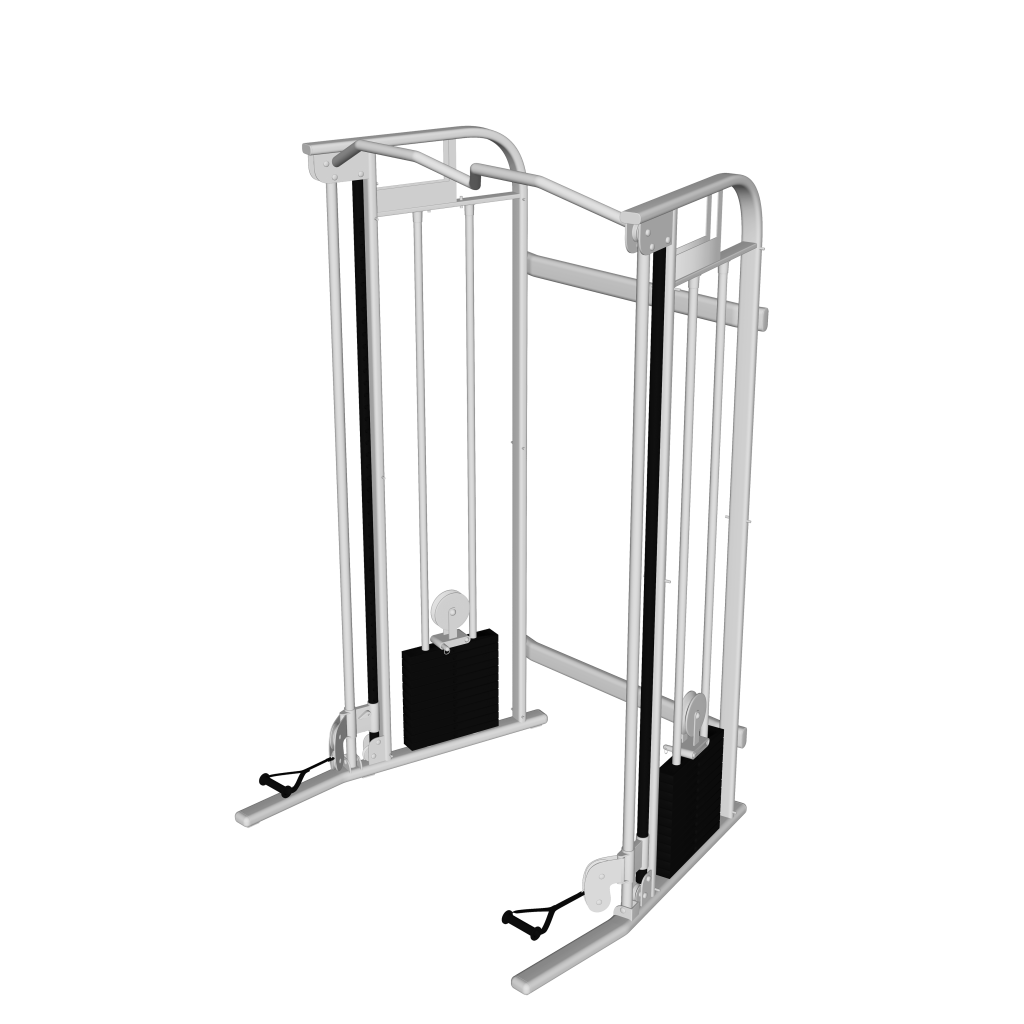
The general characteristics of a cable machine involve an interchangeable handle attached to a reinforced cable, of which attaches to a stack of weighted blocks through a pulley mechanism.
This rather simple mechanism allows exercisers to alter nearly every characteristic of the machine, thereby creating an opportunity to fit their desired exercise - all the while ensuring that the risk of injury is kept to a minimum as the actual weight itself is separate from the lifter and entirely self-stabilizing in nature.
What are the Benefits of Doing Bicep Exercises With the Cable Machine?
Machine-based resistance exercises are known for featuring a low risk of injury and a comparatively mild intensity of impact on the various non-muscular tissues of the body.
Biceps exercises are no exception to this, as they will not place as much strain on the joints of the wrist and elbows as would free weight exercises.
In addition, the highly adjustable nature of cable machines means that lifters will be able to change many aspects of the exercise so as to fit their needs, with factors like angle of resistance and the sort of grip used all easily changed within the machine itself.
How are the Biceps Trained by Cable Machine Exercises?
Biceps are primarily trained through movements that involve elbow flexion with the hands in a supinated grip - meaning movements like the bicep curl or underhand row will recruit said biceps to the greatest extent.

Furthermore, biceps may also be utilized as stabilizer muscles (albeit comparatively less with cable exercises) in movements that also involve elbow extension, but with the hands in a neutral or pronated grip instead.
1. Cable Bicep Curls
Also occasionally referred to as simply “cable curls”, the cable bicep curl is the standard machine-based biceps isolation exercise.

Featuring a single dynamic joint movement and one of the most simplistic mechanics among any exercise, the cable curl is often programmed as an accessory movement alongside heavier compound movements that also elicit biceps brachii growth.
Muscles Worked by Cable Bicep curls
Being an isolation exercise, the cable biceps curl will only train the biceps.
Benefits as a Cable Machine Biceps Exercise
Apart from being accessible to novices due to its low complexity, the cable curl is excellent for targeting the biceps in a manner that does not require the usage of other muscle groups.
Such benefit is often needed in heavy pull-day workouts where muscle groups like the deltoids, latissimus dorsi or trapezius are already fatigued and may limit the amount of training volume that the biceps will receive.
In addition, cable bicep curls feature a number of further variations that can aid in meeting any need the lifter may have - be it shifting the focus of the exercise to the brachialis muscles or creating a more unconventional angle of resistance.
How-to:
To perform a repetition of the cable bicep curl, the exerciser will attach a bar (or single-grip handle) to the cable machine, ensuring that the pulley housing is immediately below them so as to create a vertical angle of resistance.
Standing upright with the elbows pressed into the sides of the torso, the exerciser will then bend the arms and draw the handle upwards, stopping once it is at approximately shoulder-height. The wrists must remain at a neutral bend throughout this movement.
Once the handle is at shoulder elevation, the exerciser will then simply reverse the motion and return the handle to its original position around their pelvis - thereby completing the repetition.
2. Rope Hammer Curls
The machine-variation of an ever-popular arm exercise; the rope hammer curl is a compound movement that works more than just the biceps brachii.
With regular performance, rope hammer curls improve the thickness and strength of the entire arm, inducing hypertrophy in other muscles near the biceps.
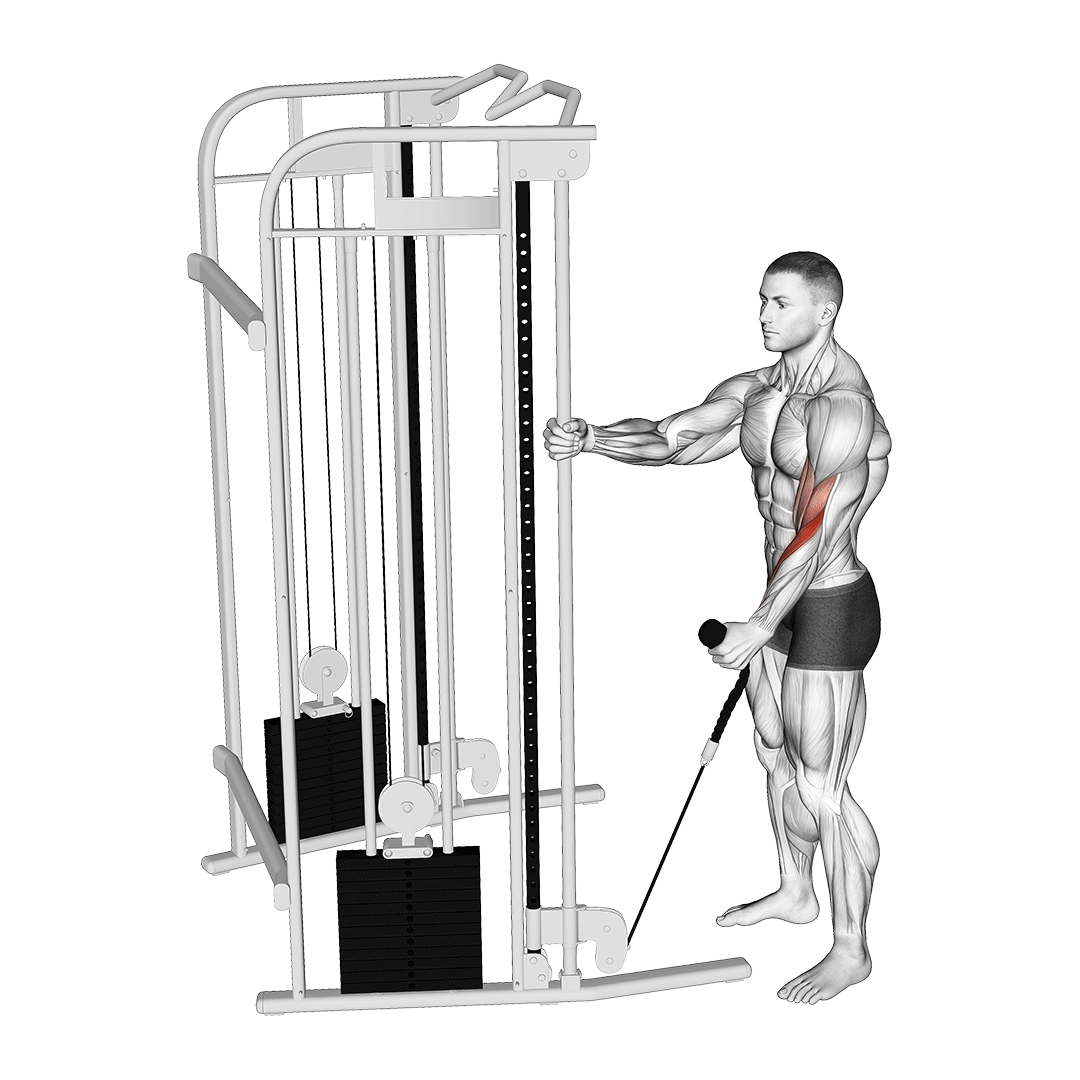
Much of the set-up and mechanics of the rope hammer curl are similar to that of the cable bicep curl, and it is common practice to perform the two interchangeably for a more well-rounded arm workout - although the rope hammer curl is perfectly effective as a standalone accessory movement as well.
Muscles Worked by Rope Hammer Curls
Rope hammer curls train the brachialis, brachioradialis and the biceps brachii - all of which play an important role in elbow flexion and contribute to as much as half of the arm’s muscle mass, making them vital for lifters wishing to build muscular arms.
Benefits as a Cable Machine Biceps Exercise
Rope hammer curls build the entirety of the elbow flexor muscles, rather than just the biceps alone. While this does improve the general muscular definition and thickness of the arms, it also ensures that all biomechanics relating to the arm are reinforced as well.
Furthermore, hammer curls of all types are known for being distinctly lower impact than other curl exercises due to the neutral grip involved - making the rope hammer curl doubly so.
How-to:
Setting the cable pulley housing below them, the exerciser will hold both ends of the rope attachment in a neutral grip, ensuring that the elbows are firmly set against the sides of the body.
From this position, they will then simply draw the rope upwards, pulling it until the ends are at approximately clavicle height.
To complete the repetition, the exerciser will then reverse the motion in a slow and controlled manner.
3. Bayesian Cable Curls
An often forgotten but highly effective cable exercise; the Bayesian cable curl takes the concepts of the conventional cable curl and maximizes the range of motion - thereby creating a greater time under tension and subsequently greater results.
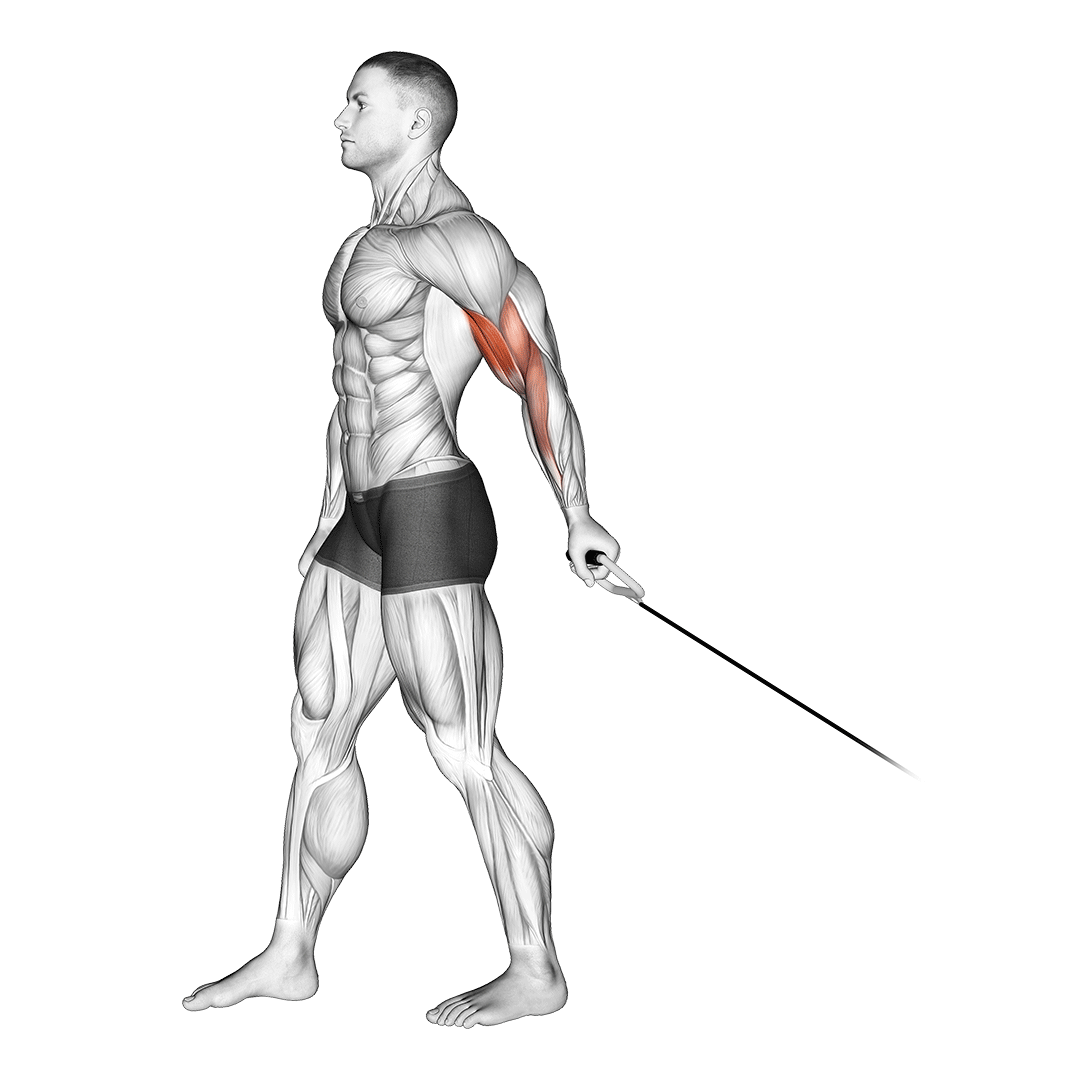
Much like the conventional cable curl, the Bayesian cable curl is a single joint isolation exercise performed for high amounts of volume and low resistance.
Muscles Worked by Bayesian Cable Curls
As an isolation exercise, Bayesian cable curls solely work the biceps brachii.
Benefits as a Cable Machine Biceps Exercise
Bayesian cable curls take all the benefits of conventional cable curls and build upon them - causing greater muscular hypertrophy and a reduced risk of “cheating” by widening the range of motion of each repetition.
Furthermore, Bayesian cable curls are traditionally performed with only one arm at a time; This can allow lifters to better focus on contracting their biceps.
How-to:
To perform a repetition of the Bayesian cable curl, the lifter will set the cable housing as low as possible and attach a single-grip handle to the machine.
Holding the handle in an underhand grip, the lifter will then turn away from the machine so their torso is facing in the opposite direction to the cable machine, handle held behind them.
Keeping the elbow and shoulder firmly set against the torso, the lifter will then curl the handle forwards and upwards.
Once the handle is at approximately pectoral-height, the lifter will simply reverse the movement, therein completing the repetition.
4. Cable Preacher Curls
The conventional preacher curl has earned a reputation for being one of the most effective bicep exercises one can perform - leaving no question as to the usefulness of its cable machine variation.
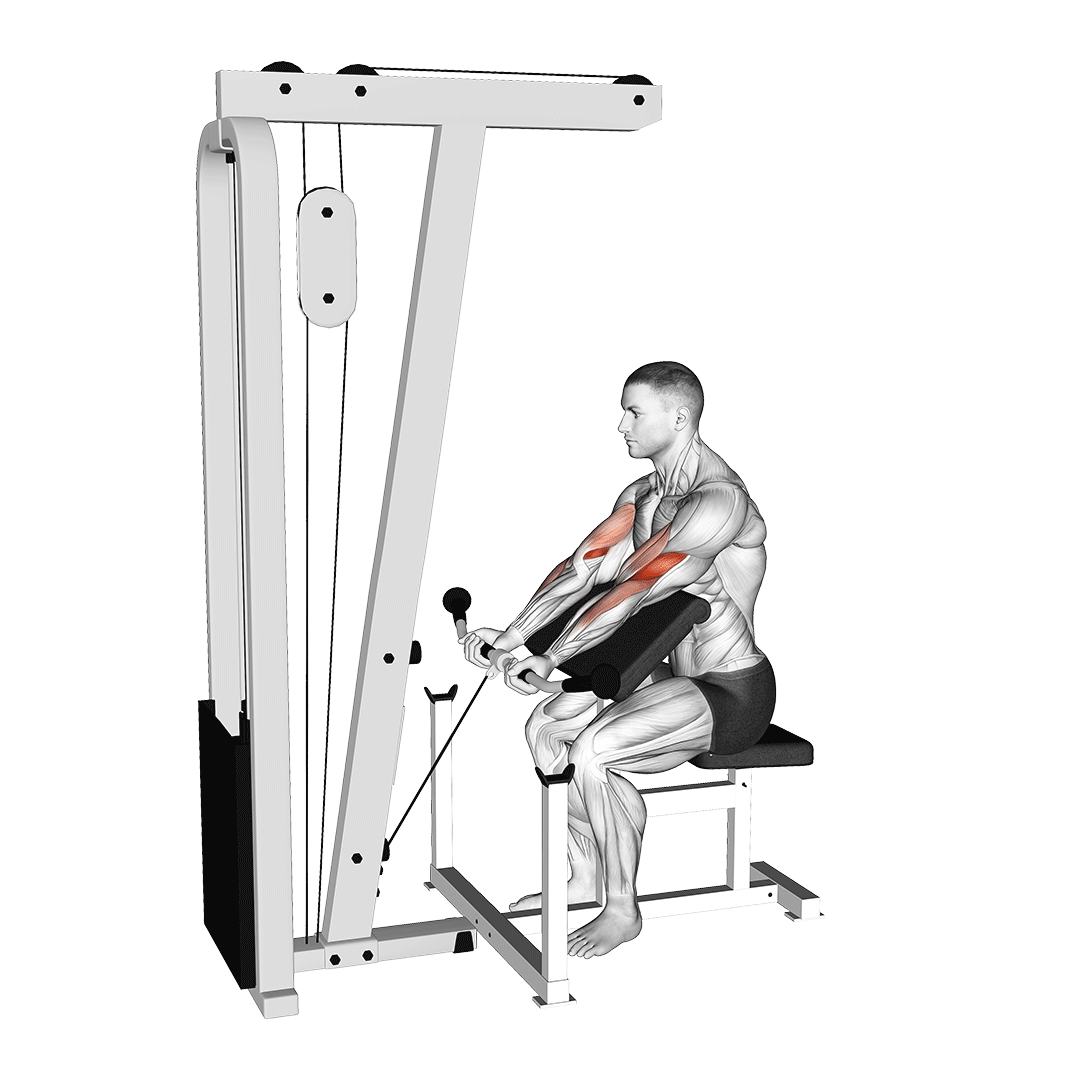
While somewhat unconventional due to the need for a preacher bench, the cable preacher curl is an excellent machine-based biceps isolation exercise for maximizing recruitment and ensuring no other muscle groups are recruited during the movement.
Muscles Worked by Cable Preacher Curls
As the very definition of an isolation exercise, cable preacher curls only train the biceps brachii.
Benefits as a Cable Machine Biceps Exercise
Cable preacher curls are the ideal machine biceps exercise if pure biceps emphasis is the goal of the workout - not only do they feature a larger range of motion than standard cable curls, but the cable preacher curl also creates an angle of resistance that maximizes biceps activation.
Furthermore, the fact that the lifter’s arms are locked into place also means that far less “cheating” or poor form may occur.
How-to:
Positioning an incline bench or preacher bench before a cable machine, the lifter will grip the cable handles and lay their upper arms atop the incline section of the bench.
The elbows should be pointing downwards and the triceps flat against the pads so as to ensure the biceps are isolated as much as possible.
To begin the repetition, the lifter will simply raise the handle towards their shoulders as they press their elbows into the bench, stopping once the hands are at neck height. The repetition is complete once they have returned the handles to their original position.
5. Underhand Cable Rows
A multi-joint compound variation of the standard rowing exercise - underhand cable rows take the conventional cable row and maximize its focus on the biceps brachii by utilizing a supinated grip as they are performed.
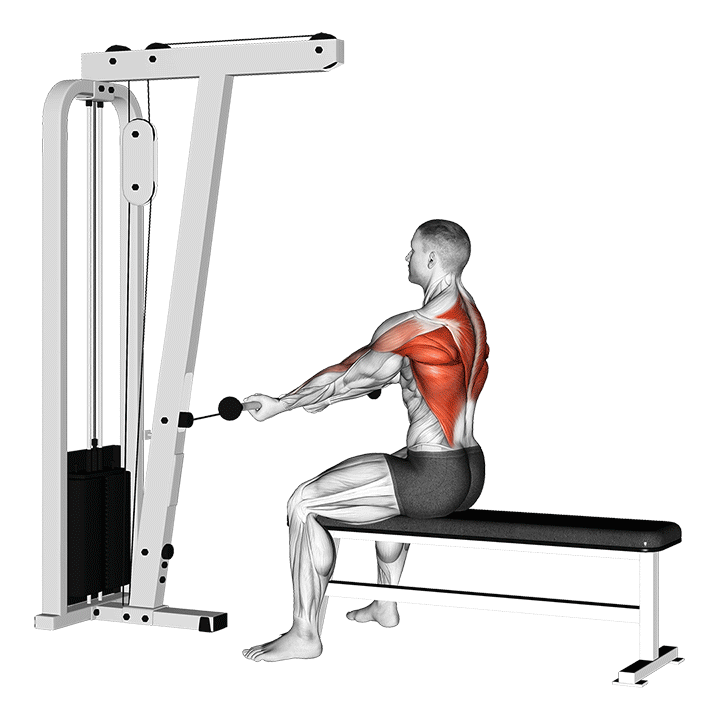
Unlike other biceps-focused exercises listed in this article, cable rows train much of the back alongside the biceps, and are more often performed for low or moderate volume sets with a relatively high level of resistance.
Muscles Worked by Underhand Cable Rows
Underhand cable rows will work the latissimus dorsi, the trapezius, the biceps brachii, the posterior deltoid head, the rhomboids and the erector spinae.
The focus of the exercise may be shifted from the latissimus dorsi to the trapezius and deltoids by setting the angle of resistance higher than the sternum, although doing so will require greater shoulder mobility and stricter form adherence.
Benefits as a Cable Machine Biceps Exercise
The underhand cable row is a compound exercise that builds not only size but also strength throughout the pull-muscles of the upper body. They (and other row variations) are considered staple exercises in many bodybuilding back workouts, and are often used as primary compound exercises.
Furthermore, the underhand cable row allows the biceps to be trained in a manner that cable curl variations cannot - utilizing far more resistance and featuring a greater level of intensity.
How-to:
To perform a repetition of the underhand cable row, the lifter will stand before a cable machine, affixing a straight bar handle to the cable, holding it with a supinated grip.
Digging the heels into the ground for balance, the lifter will push their chest out and contract their core as they row the handle towards their stomach. The elbows should be pulled towards the back of the body and the wrists kept in a neutral position as they do so.
Once the handle is sufficiently close to the torso, the lifter will then reverse the motion in a slow and controlled manner. Once the arms have returned to a state of full extension, the repetition is now complete.
Frequently Asked Questions (FAQ)
Are Cable Machines Good for the Biceps?
Yes - cable machine exercises are great for developing the biceps brachii.
Unlike other muscle groups, the biceps will often respond best to directly-targeted training volume, such as is seen in bicep curls.
Cable machines excel at producing this sort of training stimulus by being self-stabilizing and allowing for a high level of variability in terms of angle of resistance and grip usage, allowing for even niche biceps exercises to be performed easily.
What Cable Attachment is Best for Bicep Curls?
To get the best results from a set of bicep curls, handles that allow for an underhand or supinated grip are the ideal choice. Attachments like single-grip handles or straight bar attachments will allow for the most biceps recruitment.
What’s the Best Cable Machine Exercise for the Back and Biceps?
The best cable machine exercise for working the back and biceps is a tie between the pulldown and the cable row - both of which train the same muscle groups, but each with a different emphasis.
Pulldowns will place more focus on the latissimus dorsi muscles of the back, whereas cable rows will target the trapezius and rhomboids to a greater extent. Both exercises recruit the biceps to approximately the same level, however.
In Conclusion
Keep in mind that the exercises listed in this article are rarely used on their own. Instead, you may see far better results from combining them into the same workout - as well as by picking other exercises that aren’t performed with the use of a cable machine.
Regardless of whether you found the right bicep exercise or not, remember to follow proper programming and ensure that correct form is adhered to as much as possible, as it is these two factors that will ensure safe and consistent muscular growth.
References:
1. Nunes, J.P.; Jacinto, J.L.; Ribeiro, A.S.; Mayhew, J.L.; Nakamura, M.; Capel, D.M.G.; Santos, L.R.; Santos, L.; Cyrino, E.S.; Aguiar, A.F. Placing greater torque at shorter or longer muscle lengths? Effects of cable vs. barbell preacher curl training on muscular strength and hypertrophy in young adults. Int. J. Environ. Res. Public Health 2020, 17, 5859
2. Coratella, Giuseppe, Gianpaolo Tornatore, Stefano Longo, Nicholas Toninelli, Riccardo Padovan, Fabio Esposito, and Emiliano Cè. 2023. "Biceps Brachii and Brachioradialis Excitation in Biceps Curl Exercise: Different Handgrips, Different Synergy" Sports 11, no. 3: 64. https://doi.org/10.3390/sports11030064
